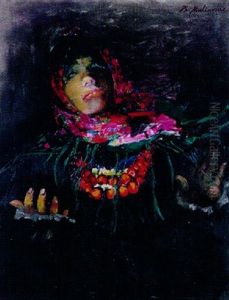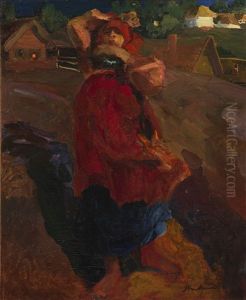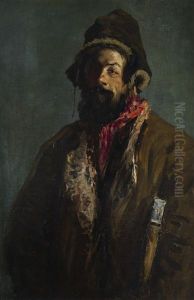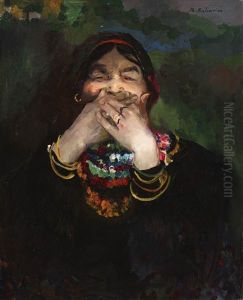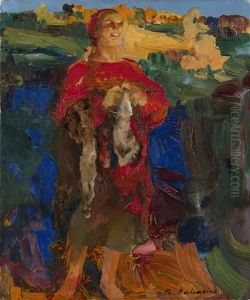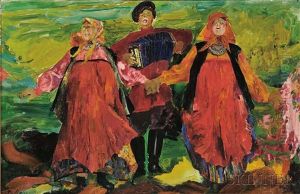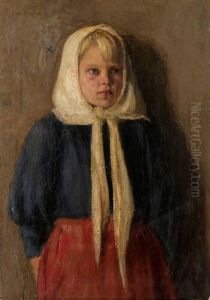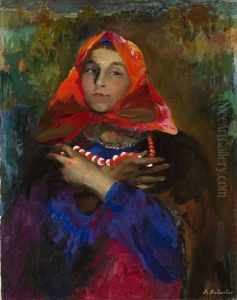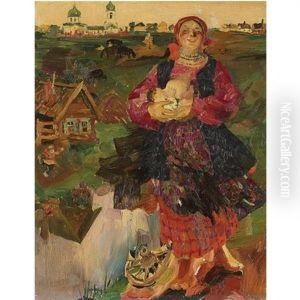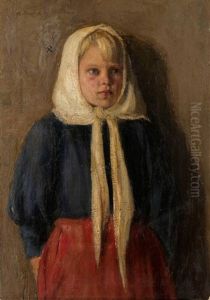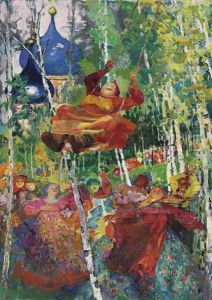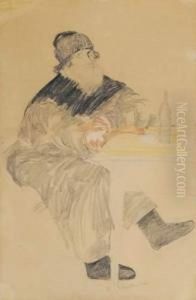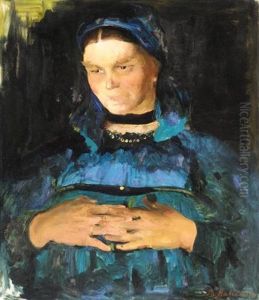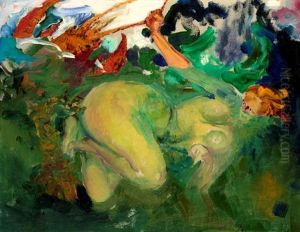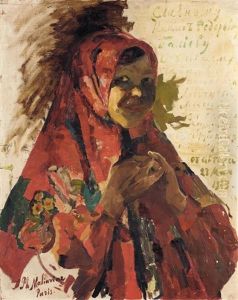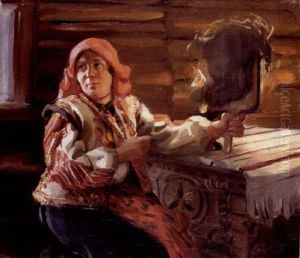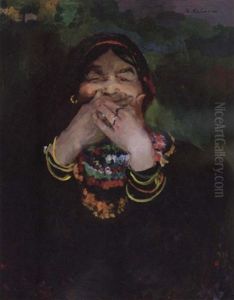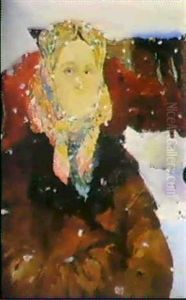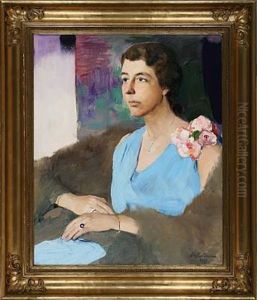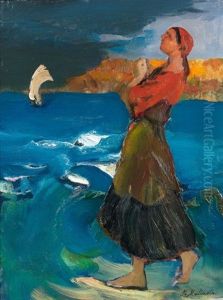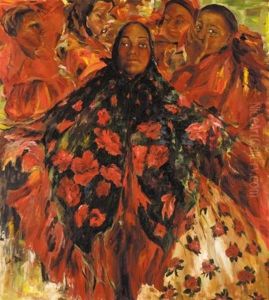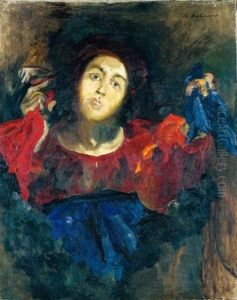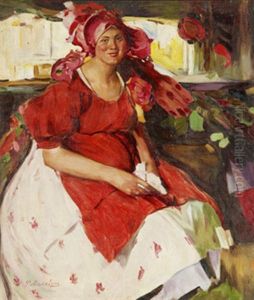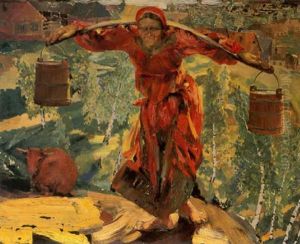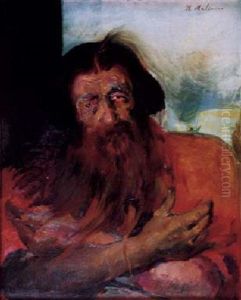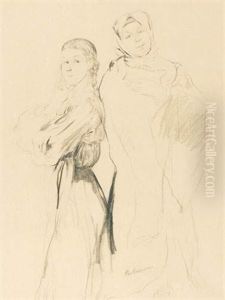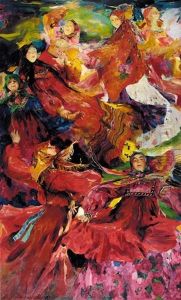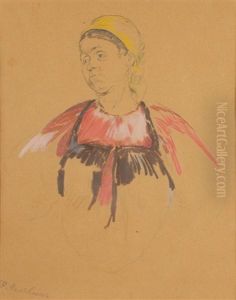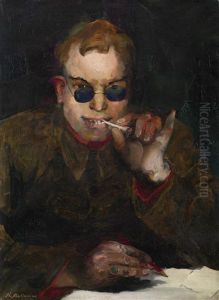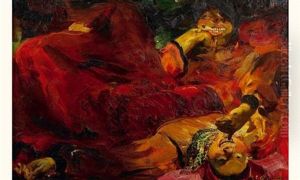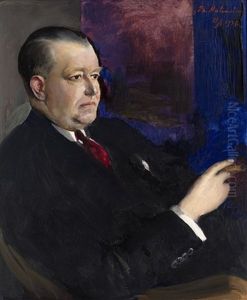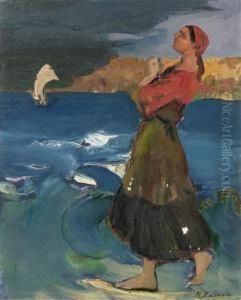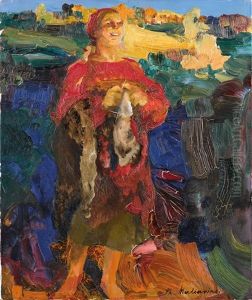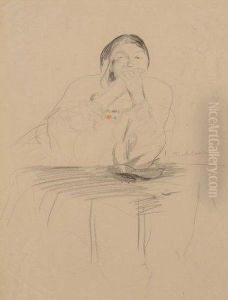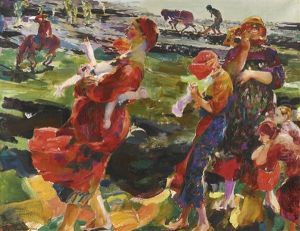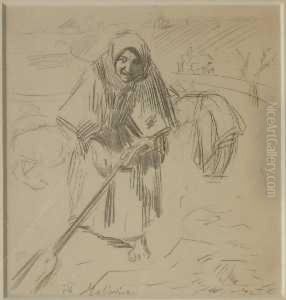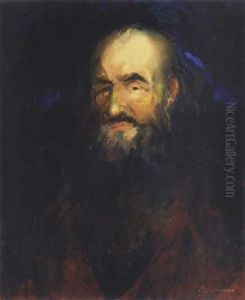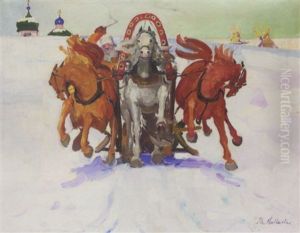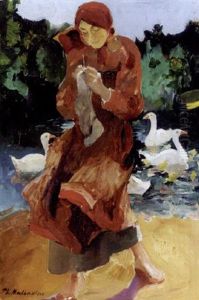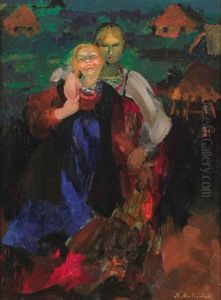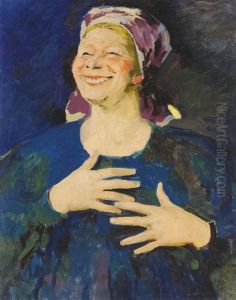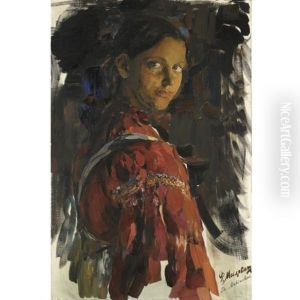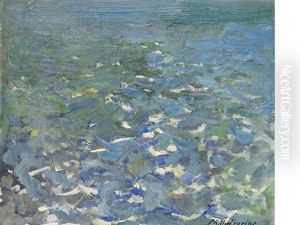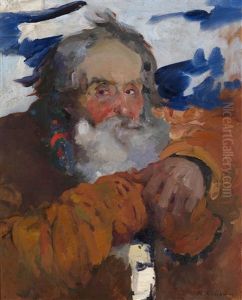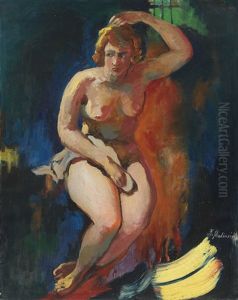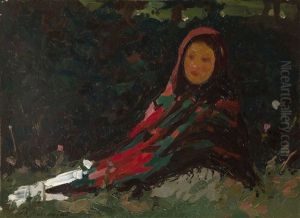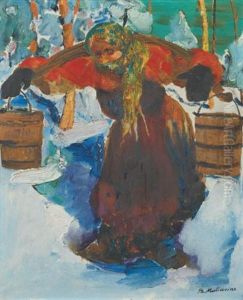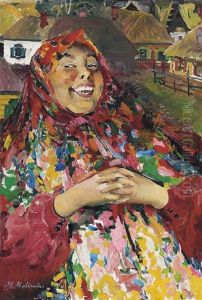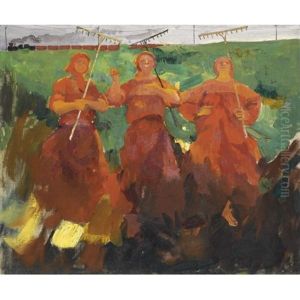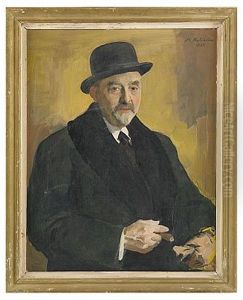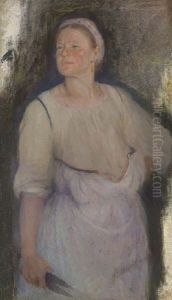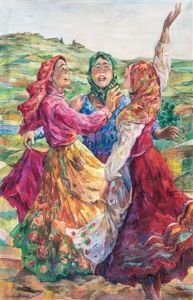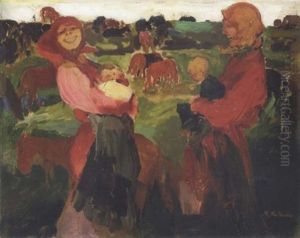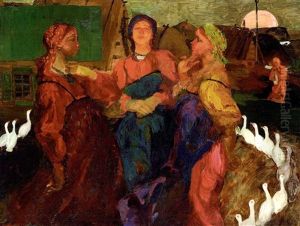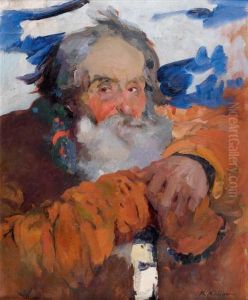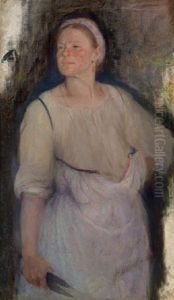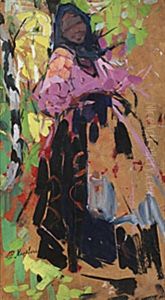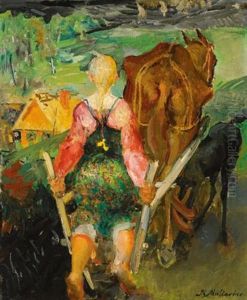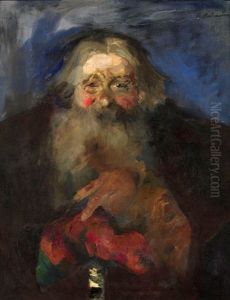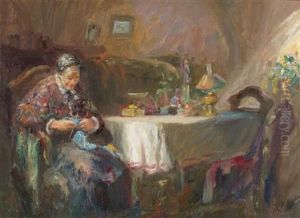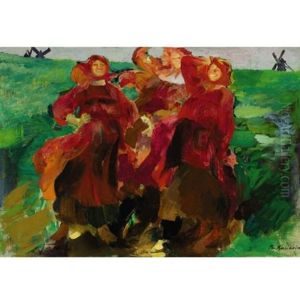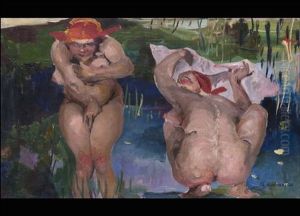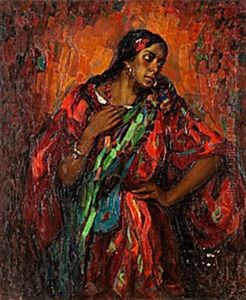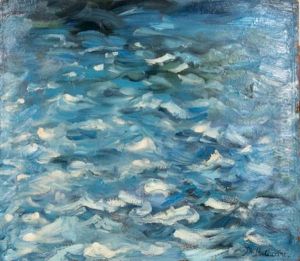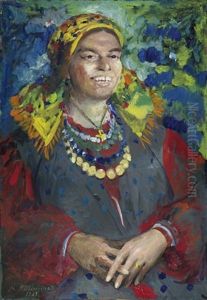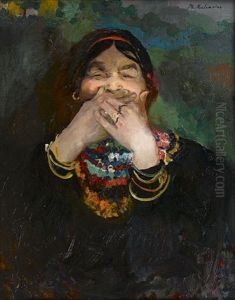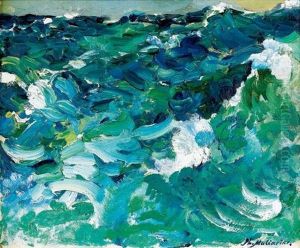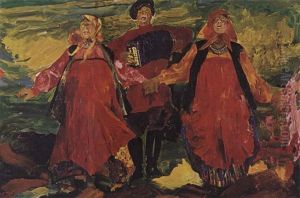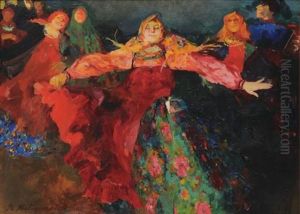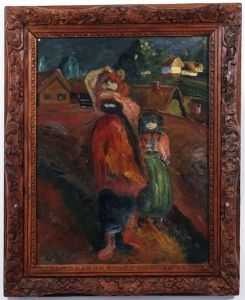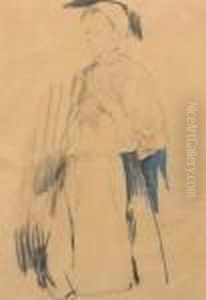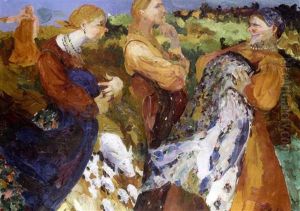Filip Malyavin Paintings
Filipp Andreevich Malyavin was a Russian painter and graphic artist, born on October 6, 1869, in the village of Kazanki, in what is now the Ryazan Oblast of Russia. Coming from a peasant family, Malyavin's journey to becoming an acclaimed artist was unconventional. Initially, he was trained to become a priest at the Optina Pustyn monastery, where his artistic talent was first recognized. He used to decorate the monastery with flowers and his first drawings depicted the monastic life.
Malyavin's artistic skills were largely self-taught until he entered the Moscow School of Painting, Sculpture and Architecture at the age of 24. His works during this period were deeply rooted in the Russian folk tradition and peasant life, which remained a central theme throughout his career. In 1899, he was admitted to the Imperial Academy of Arts in St. Petersburg, where his vibrant palette and dynamic brushwork quickly gained attention.
His painting 'Whirlwind', featuring peasant women dancing in a circle, won him the Academy's gold medal and a scholarship to study abroad. Malyavin spent several years in Italy, where he was influenced by the Old Masters. However, he maintained his distinct style characterized by bold colors and expressionistic portrayals of Russian peasant life.
Upon returning to Russia, Malyavin became a member of the Russian art movement known as the Mir Iskusstva (World of Art), but his relationship with the group was ambivalent. His focus on peasant subjects was at odds with the more elitist leanings of the group.
Malyavin's career was interrupted by the Russian Revolution in 1917. His art, which celebrated the life and vigor of the Russian peasantry, was out of step with the new Soviet ideology. In 1920, he left Soviet Russia and moved to Paris, where he continued to paint and exhibit his work, although with varying success. His later years were marked by financial struggle and relative obscurity.
Filipp Malyavin died on December 23, 1940, in Nice, France. Despite his fall from prominence after leaving Russia, Malyavin left behind a body of work that is celebrated for its unique contribution to Russian art, particularly for its vivid portrayal of peasant life and its innovative use of color and form.
